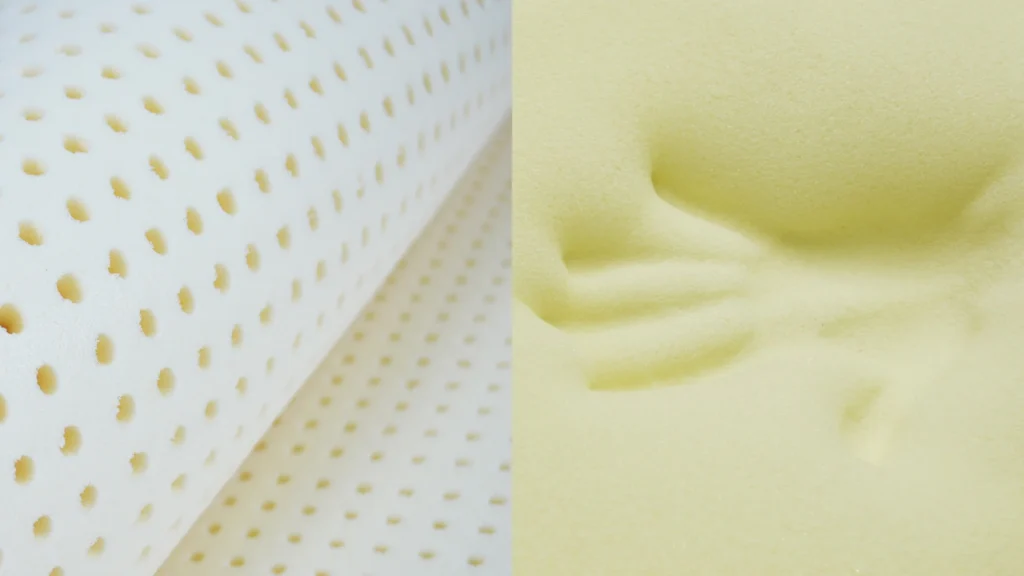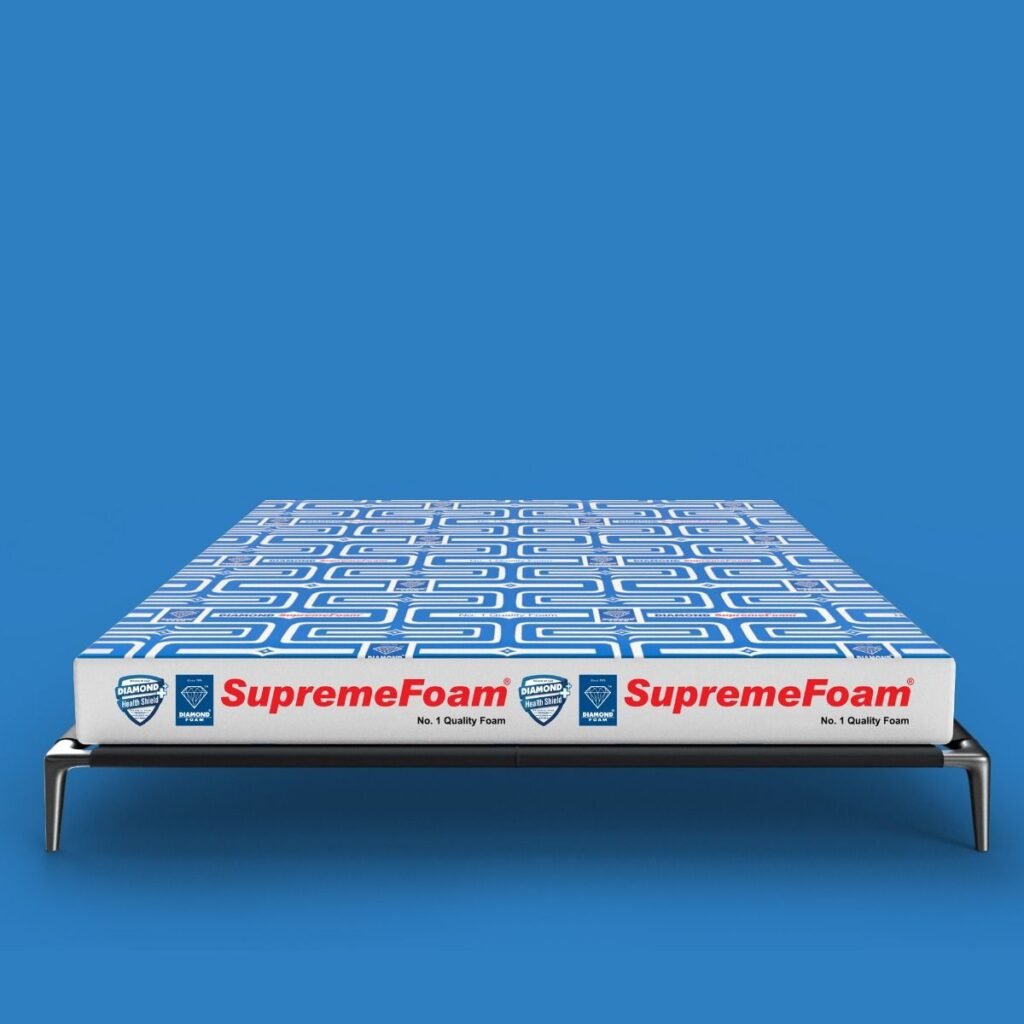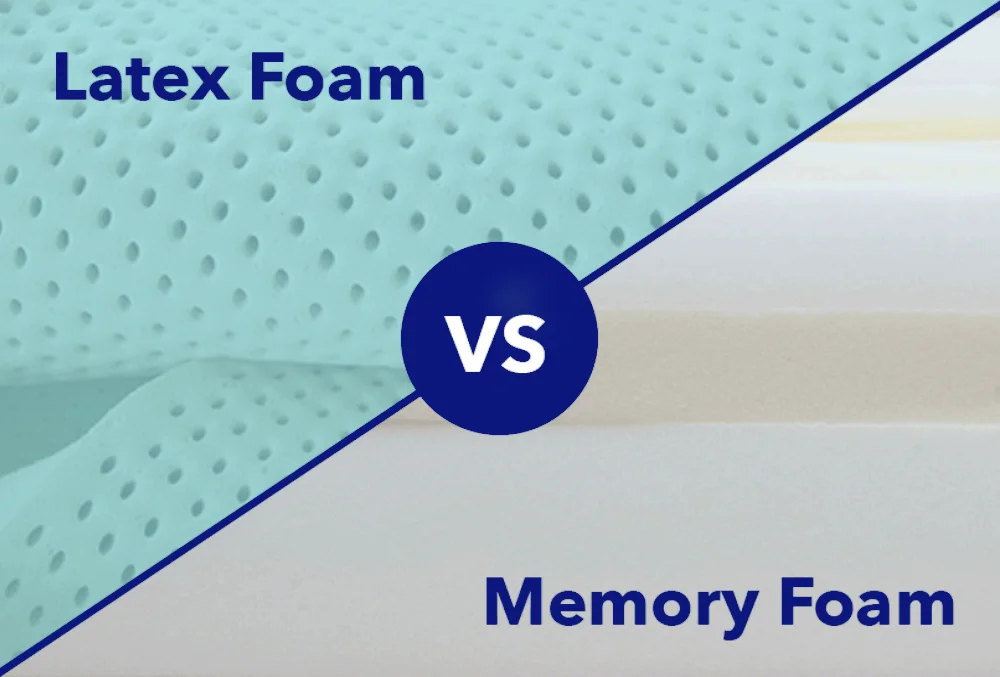When it comes to the materials inside your mattress or pillow, understanding the different types of foam can be a bit overwhelming. Foam is more than just a soft surface; it plays a vital role in how your mattress feels, how long it lasts, and how well it supports your body. This guide breaks down the most common foam types: Polyurethane (PU), Latex, and Viscoelastic (Memory) foam, offering a closer look at the science behind their composition and performance.
Polyurethane (PU) Foam
Polyurethane foam is a synthetic polymer created through a chemical reaction between polyol and isocyanate. The reaction forms a cellular structure that can be tailored to various densities and firmness levels.
- Density: Measured in kilograms per cubic meter (kg/m3) or pounds per cubic foot (lb/ft3), density is the primary factor in a foam’s durability and support. Higher-density foams resist compression and retain their shape longer, while low-density foams feel softer initially but may compress more quickly.
- Indentation Force Deflection (IFD): This measures the force required to compress the foam. High IFD foams are firm, while low IFD foams are soft and plush.
- Airflow: The open-cell structure of PU foam promotes airflow, which contributes to better temperature regulation and makes it a good choice for a breathable mattress.
Latex Foam
Latex foam is derived from the sap of the rubber tree or made synthetically. It is produced by whipping the liquid latex into a froth, pouring it into molds, and then baking it. Latex foam stands out for its natural elasticity and durability.
- Production Processes:
- Talalay: This process creates a lighter, more buoyant foam with a uniform cell structure. It is generally softer and more breathable.
- Dunlop: This process results in a denser, firmer foam. Sedimentation occurs during baking, which makes the bottom layer firmer than the top.
- Key Properties: Latex foam is known for its exceptional elasticity, long-lasting resilience, and resistance to compression. It’s naturally hypoallergenic and offers superior breathability, helping with temperature regulation without the need for chemical additives.
Viscoelastic (Memory) Foam
Viscoelastic foam, commonly known as memory foam, is a specialized form of polyurethane foam. It is recognized for its unique ability to conform to heat and pressure, creating a body-cradling effect.
- Temperature Sensitivity: Memory foam softens when exposed to body heat, allowing it to contour to the sleeper’s shape. As the foam cools, it gradually returns to its original form.
- Pressure Relief: This foam is excellent at distributing body weight evenly, which helps to alleviate pressure points, particularly around sensitive areas like the joints and back.
- Motion Isolation: Due to its high viscosity, memory foam is a master at absorbing motion, making it an excellent choice for couples who don’t want to be disturbed by their partner’s movements.
- Heat Retention: Traditional memory foam can trap heat. Modern versions are often infused with cooling gels, copper, or graphite to draw heat away from the body and ensure a cooler sleeping experience.
Conclusion
Understanding the technical differences between foam types is essential for making an informed decision about your next mattress or pillow.
- Polyurethane foam is a versatile, cost-effective option that offers good durability when properly formulated.
- Latex foam stands out for its natural elasticity, breathability, and hypoallergenic properties, making it an excellent choice for a firmer, more responsive feel.
- Viscoelastic foam excels in pressure relief and motion isolation, making it a top choice for people seeking targeted support for back or joint pain.
By considering these technical attributes, you can choose a foam that provides the perfect mix of comfort, support, and longevity for a truly restful sleep experience.



